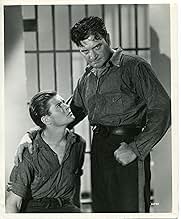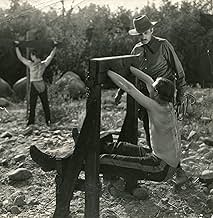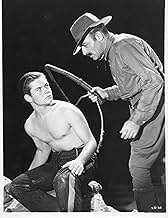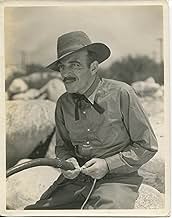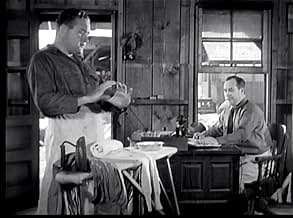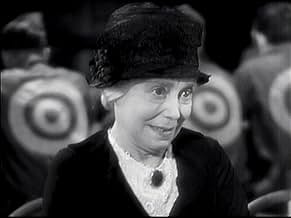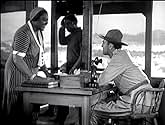Agrega una trama en tu idiomaChain gang prisoners forced to construct a "liberty highway" for their overseer chasten under his brutal stewardship, causing Duke Ellis to mastermind a mass riot.Chain gang prisoners forced to construct a "liberty highway" for their overseer chasten under his brutal stewardship, causing Duke Ellis to mastermind a mass riot.Chain gang prisoners forced to construct a "liberty highway" for their overseer chasten under his brutal stewardship, causing Duke Ellis to mastermind a mass riot.
- Dirección
- Guionistas
- Elenco
- Premios
- 1 premio ganado en total
- Rascal's Sweetheart at Visitor's Center
- (sin créditos)
- Hunt Club Manager on Telephone
- (sin créditos)
- Singer in Etude Ethiopian Chorus
- (sin créditos)
- Singers of the Spirituals
- (sin créditos)
- Turkey Neck Burgess - the Cook
- (sin créditos)
- Dirección
- Guionistas
- Todo el elenco y el equipo
- Producción, taquilla y más en IMDbPro
- The headlines in the opening sequence are from real newspapers, and refer to the Arthur Maillefert case which shocked the nation. On June 3, 1932, Maillefert was put in a shed similar to the one we see in the movie, with a chain wrapped around his neck and wooden stocks around his feet, and he died within an hour. The first article shown is from the Seattle Post-Intelligencer, "Prison Guards Accused of Murder As Tortured Youth Dies Chained In Sweat Box", and if you search for the next one, "Dark Age Tortures Revealed in Prison Camp Death Quiz", you'll see it's on the front page of the San Francisco Examiner from July 10, 1932. Filmmakers moved quickly; this movie was released September 23, 1932.
- The moment when a guard is about to whip the main character (Richard Dix), but hesitates. The camera pans down and we see a large tattoo on his back with the American flag, and the words "42nd Machine Gun Co. 167th Inf." We don't know much else about this guy and the film doesn't describe too much about his crimes, except that they're numerous and he's "habitual", destined for a life sentence - but finding out that he's a veteran humanizes him, and also points out that criminals have also done positive things in their lives. Given the horrifying outcome of the 'Bonus Army' encampment in Washington D.C. in July, 1932, this image would likely have resonated even more with filmgoers at the time.
- During the jail break the deaf prisoner is hiding in the tall grass, and doesn't see a couple of guys come up behind him. They tell him to "put 'em up", and of course he doesn't because he can't hear them, so they shoot him. It's another case of not knowing everything about someone else, and either misinterpreting or not understanding their actions as a result.
- I loved the treatment of African-American in the film. One wisely comments that the guards are more concerned with the way mules are treated than convicts, because mules cost money and the men are free. Another says to his visiting wife that "Sweetheart, you don't how tired a man does get when he don't get no loving," which in a simple way helps us empathize. I also loved the scenes where we hear groups singing the blues, and during one of them, an artist drawing a few funeral scenes.
- Lastly, something about seeing C. Henry Gordon trying to learn the violin at night using the "E-Z Method" made me smile; perhaps despite his inhumane ways, the film tries to point out he's human too.
I was less enamored with a few comments about women, one of which being that a lot of crime is done on behalf of women, and another that prison is a good way to escape being married to three women, since, you know, women are such balls and chains themselves. "I Am a Fugitive from a Chain Gang", also from 1932, is a better film with more emotional power, but this one is worth seeing too.
- gbill-74877
- 3 ene 2019
- Enlace permanente
Argumento
¿Sabías que…?
- TriviaRKO executives were concerned about a possible plagiarism suit by the author of the book and the movie version I Am a Fugitive from a Chain Gang (1932) in production at Warner Bros. at the time. Some deletions and changes were made until they were satisfied that no legal action would be taken.
- Citas
Duke Ellis: [Chatting with a convicted bigamist] How many women did you really marry?
Matthew the Hermit: How many banks did you really rob?
Duke Ellis: Never more than one at the same time.
Matthew the Hermit: It takes nerves of steel to rob a bank.
Duke Ellis: It takes a lot of backbone to keep three wives happy.
Matthew the Hermit: Yea, Brother!
Selecciones populares
- How long is Hell's Highway?Con tecnología de Alexa
Detalles
- Fecha de lanzamiento
- País de origen
- Idiomas
- También se conoce como
- Chain Gang
- Locaciones de filmación
- Productora
- Ver más créditos de la compañía en IMDbPro
- Tiempo de ejecución1 hora 2 minutos
- Color
- Relación de aspecto
- 1.37 : 1
Contribuir a esta página


















